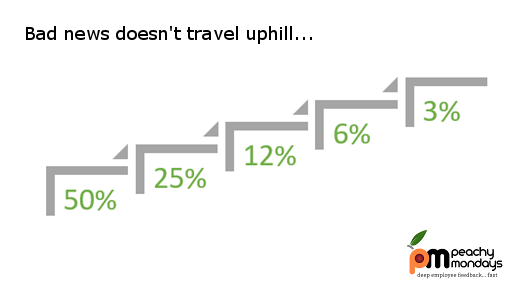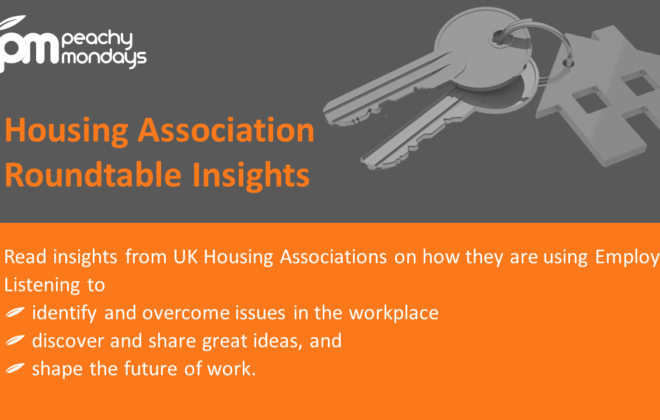Bad news doesn’t travel uphill
Why leaders need to reconnect with the reality of work through employee listening.
The organisations we work with at Peachy Mondays are diverse; large and small; from a wide range of sectors; and located in over 60 countries. The questions that our clients ask and the feedback from their employees vary enormously, but we have discovered one universal truth: leaders are always more positive than their employees.
What can explain this disconnect? Why are leaders so detached from the reality of work?
Our aversion to loss
In 2002, Daniel Kahneman won the Nobel Memorial Prize in Economics for his work on Prospect Theory. Prospect Theory assumes that losses and gains are valued differently. For example, if you were to challenge a person to a coin toss, heads you win £5, tails you lose £5, they are unlikely to accept. Typically, the size of the gain has to be at least twice the size of the loss before an individual will take a risk.

Our aversion to loss isn’t solely focused on the financial. We are also twice as likely to share good news as we are to share bad news.
So how can we reconnect leaders to the reality of work?
Continuous employee listening
Employee listening is vital. Giving employees an anonymous voice makes it easier – and safer – to speak up, which means that more insight reaches the eyes and ears of senior leaders. In fact, using Peachy Mondays’ Targeted Anonymous DialogueTM feature, leaders and managers can conduct follow-up conversations in real time to get to the bottom of issues and identify actions that can be taken.
However, with the current pace of organisational change and more demanding employees, the frequency of listening is also crucial if leaders are to spot potential issues or concerns in a timely manner.
Employee listening is the ‘cheapest smoke alarm leaders can install’ (to coin a phrase from employee engagement expert David MacLeod). The annual employee engagement survey isn’t enough. Pulses that are well-targeted and cross-functional, combined with other sources of data (in-person for example, via one-to-ones and team meetings) must form part of an organisation’s employee listening strategy if it is to be truly holistic.
Be mindful of survey-fatigue though; employees won’t engage in the feedback process if they don’t see action being taken. You must decide a frequency of feedback-gathering that matches your ability to take action.
We can help you review and develop your employee listening strategy. If you’re a senior leader and would like to know what is really going on in your organisation, get in touch to see how Peachy Mondays can provide your employees with a voice.
Related Posts
Categories
- Case Study (13)
- Change and transformation (21)
- Connectedness (4)
- Culture (17)
- Design (10)
- Diversity and Inclusion (1)
- Effectiveness (16)
- Employee engagement (60)
- Employee experience (43)
- Employee Feedback (51)
- Employee Wellbeing (1)
- Events (10)
- Financial Wellbeing (1)
- Happiness (4)
- Internal Communications (10)
- News (24)
- Onboarding (1)
- Organisational Effectiveness (18)
- Uncategorized (3)




